This 3 day itinerary in Seoul shares how to see the best of Korea’s capital for first-timers, plus additional things to do so you have all you need for a perfect Seoul trip.
Korea’s large and bustling capital city boasts a fun and energetic atmosphere. It’s not only known for its modern skyscrapers and neon-lit streets, but also for the long list of incredible historic landmarks. From ancient palaces, holy temples, and drool-worthy street food, there’s so much to love. And it doesn’t hurt that Seoul is up there as one of the world’s most walkable cities. That coupled with the city’s vast network of public transportation, makes exploring the top attractions oh so easy!
This guide is geared towards first time visitors looking to experience the best tourist attractions in the city as well as some of the unique aspects of Korean culture. This is how to spend 3 days in Seoul.
This post may contain affiliate links, meaning at no additional cost to you, if you click my links and make a purchase, I may earn a small commission. Learn more on my disclosure page. Thank you for your support!
Is 3 days in Seoul enough?
Three days in Seoul should be enough to get well acquainted with the city! In a perfect world, you could easily spend a week or longer soaking up all Seoul has to offer. But if you’re short on time and have other places in Korea to visit, don’t fret. This Seoul itinerary shares how to experience the most of the city in only three days.
↠ Read More: 45 Absolute Best Things to Do in Seoul, Korea
Best Time to Visit Seoul
The best time to visit Seoul, in my opinion, is late spring through early fall. Spring sees the short-lived cherry blossoms, and fall has colorful leaves. The summer is green and lush although hot and humid. In the winter, the nation gets pretty chilly and the north can see some snowfall. The landscape also turns quite grey and gloomy. But overall, Seoul is truly a great place to visit anytime of year.
Seoul Travel Tips
If this is your first time visiting South Korea, here are some tips to help you navigate around the country.
↠ Read More: 20 Helpful Travel Tips for South Korea
Where to Stay in Seoul: The Best Neighborhoods in Seoul
Before you venture off to enjoy your exciting adventure, you should know where the best places to stay in Seoul are! I prefer staying in the Myeongdong, Hongdae, or Itaewon districts, as they offer some of the best attractions in the city. There are many incredible hotels, hostels, and Airbnbs in Seoul to choose from.
Here’s a breakdown of the best neighborhoods in Seoul to stay for travelers as well as hotel recommendations.
Myeongdong/Junggu District: Best for first-timers and those looking to stay in the heart of the city
Myeongdong is the most central and tourist-friendly place you can stay in the city. It’s home to Seoul’s popular shopping street and is close to central metro stops making travel around to Seoul’s top attractions easy. Prices for hotels and hostels will be a little bit more expensive than the other neighborhoods, but it shouldn’t be by too much!
Best places to stay in Myeongdong:
5-Star luxury: Four Seasons Hotel Seoul
Stylish boutique: L’Escape Hotel
Mid-range with unique decor: Hotel28 Myeong-dong
Budget-friendly: Ibis Styles Ambassador
Hongdae District: Best for those interested in experiencing a young, hip, and artsy scene
Hongdae is a bit more off the beaten track is a great place for a young and hip scene. This area is home to some of Seoul’s cutest and best cafes and shopping. I recommend for foodies and young budget travelers.
Best places to stay in Hongdae:
4-star, stylish hotel that’s not overly priced: RYSE
Mid-range + a rooftop pool: L7 Hongdae by Lotte
Seoul’s best hostel: Time Travelers Relax Guesthouse Seoul
Itaewon District: Best for those who wish to stay in a vibrant area home to Seoul’s most exciting nightlife
Itaewon is the international neighborhood home to all the international cuisine you could ever want. This area attracts expats and has some of the best nightlife and bars in the city. If you’re looking for a party or just a good drink, Itaewon is the place to be.
Best places to stay in Itaewon:
5-star luxury: Mondrian Seoul Itaewon
Mid-range + pop art decor: Imperial Palace Boutique Hotel
Popular hostel near nightlife: G Guesthouse Itaewon
↠ Read More: 101+ Instagrammable Places in South Korea
Day 1: The Traditional Side of Seoul
Day 1’s itinerary is jammed packed with the key tourist attractions in Seoul. I recommend you put on your walking shoes and prepare to put some on some mileage – you’re certainly meeting your step count goal with a schedule like this!
Stop 1: Gyeongbokgung Palace
Start your day off by visiting Gyeongbokgung, Seoul’s largest palace. Of Seoul’s five grand palaces, this is the most popular and best to see if only have time for one of them. Pay the 3,000 / $2.50 USD entrance fee to see the grounds and spend anywhere from 1-2+ hours wandering the area.
If you’re feeling really spicy, you can rent a hanbok, the Korean traditional dress, and have a photoshoot kind of day – many people love to indulge in this trip extra. Gyeongbokgung is open between 9 am – 6 pm.

Stop 2: Bukchon Hanok Village
Nestled in the heart of Seoul’s modern city not far from the palace, lies the beautiful Bukchon Hanok Village. A hanok is a traditional Korean building made of wood, and this neighborhood is lined with many making you feel transported back in time. This area is residential, so be sure to be quiet and respectful of the locals who live there and their property.
You only need maybe 30 minutes to wander through the streets of the Bukchon Hanok Village, and it’s about a 25 minute walk from the palace. Its also possible to hop on the metro.
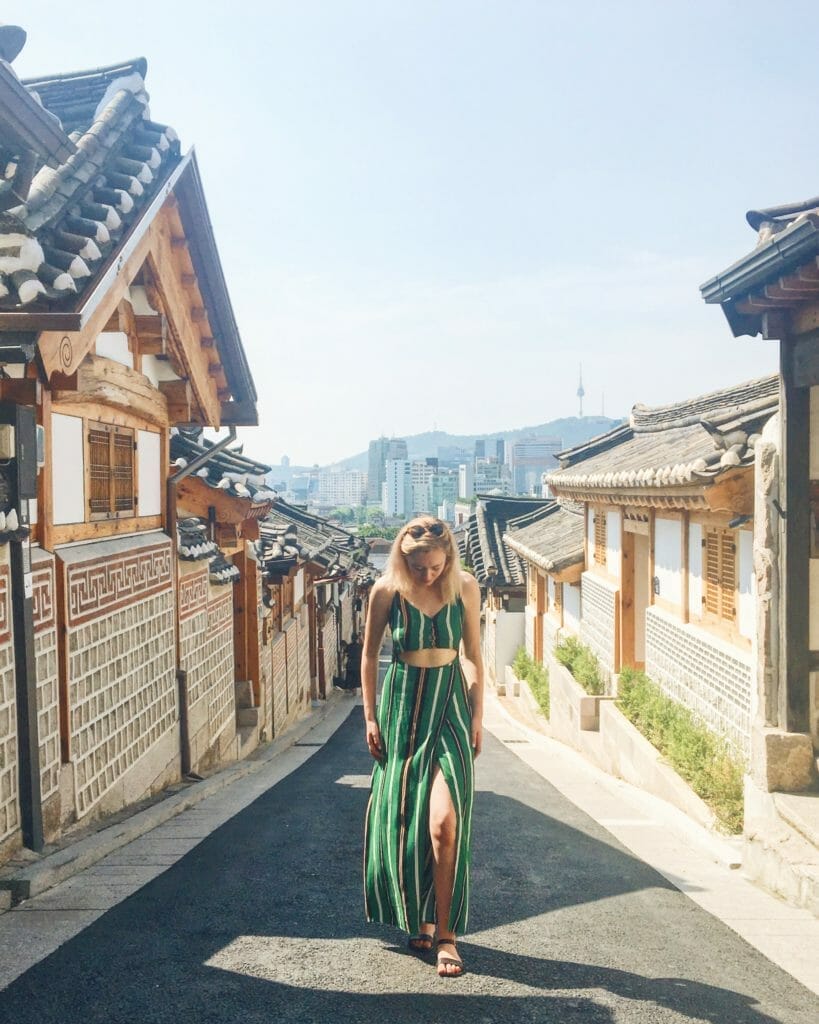
Stop 3: Cheonggyecheon Stream
After you’ve seen Gyeongbokgung and Seoul’s hanoks, I recommend taking a casual stroll along Seoul’s iconic Cheonggyecheon Stream. The stream is pretty close to the palace, and you’ll likely follow Sejong Daero road past the famous statue of King Sejong, an iconic historical figure in Korean history. You should eventually see a large colorful spiral ribbon looking thing/statue, which is where the stream walk begins.
The stream is a nice break from the city. The walls are covered in modern and traditional murals, greenery and historical tidbits about Korea.
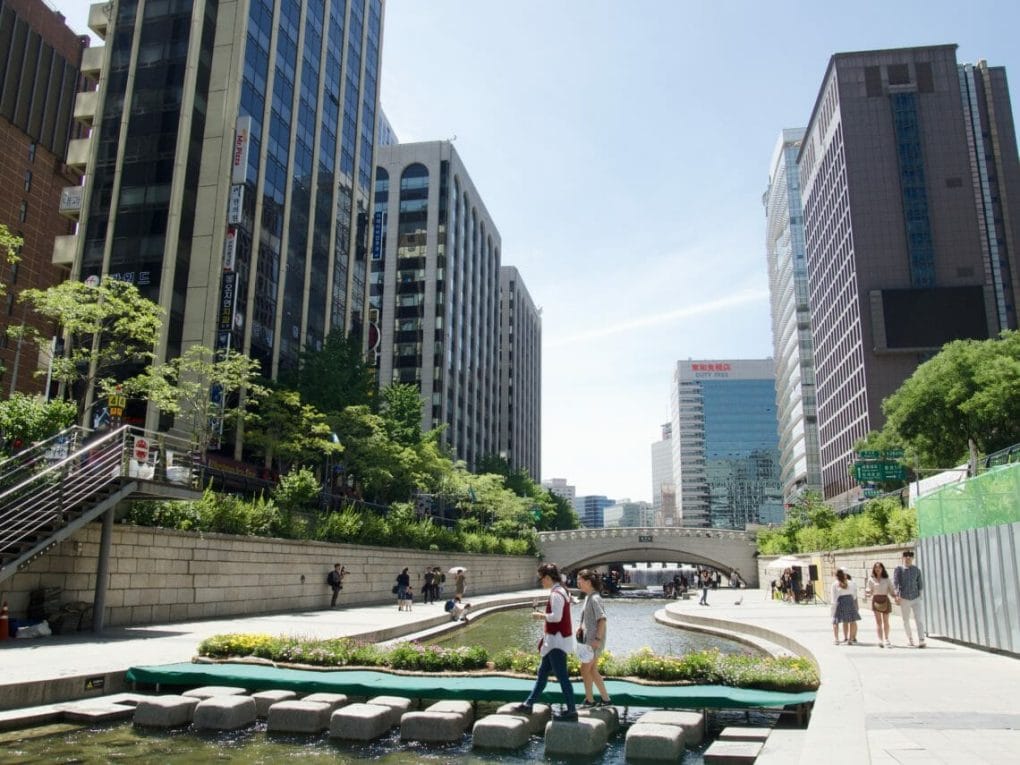
Stop 4: Gwangjang Traditional Market
Your walk along the stream will eventually take you to Gwangjang Traditional Market – one of the oldest traditional markets in South Korea. Keep your eyes peeled for brown signs indicating the entrance to the market from the stream. Gwangjang is famous for serving up some of the best Korean street food in the city.
While you’re there, I highly recommend you take the opportunity to try some of my faves; dumpling soup (mandu-guk / 만둣국), build your own rice and veggie bowls (bibimbap / 비빔밥) and mung bean pancakes (bindaetteok / 빈대떡). It’s a perfect place to stop in for lunch and to sample different traditional Korean goodies.
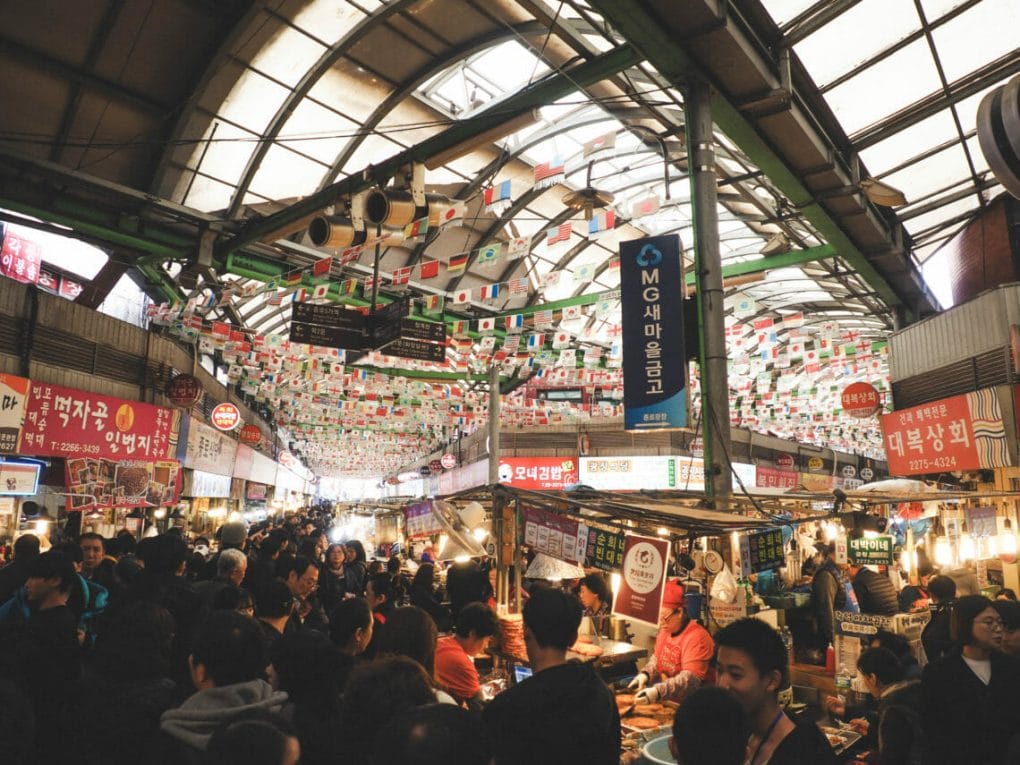
Stop 5: Insadong Shopping Street
Now that you’ve had the chance to eat your way through the traditional market, it’s time to work it all off on a shopping trip down Insadong Shopping street. It’s about a 30 minute walk (1.5 km/1 mile) to Insadong or you can take a quick taxi which shouldn’t cost you much more than 10,000 won.
This traditional neighborhood is one of the best areas to pick up a Korean souvenir or two! All the shop names in Insadong must be written in Korean which adds to the cultural atmosphere. There’s a Starbucks in the neighborhood and it’s actually the only Starbucks in the world whose sign isn’t in English.
You should also stop to watch the candy vendors on the street make famous Korean King’s Candy and try a cup of traditional Korean tea at Insadong Chatjip Teahouse.
Stop 6: Grab dinner at Gaeseong Mandu Koong, an affordable Michelin recognized restaurant
Nestled in Insadong in a traditional Korean hanok, is Gaeseong Mandu, a famous local joint serving up a variety of traditional dishes. They specialize in mandu, or Korean dumplings, and are one of the best restaurants to try in Seoul. It’s been recognized by Michelin Bib and is known as one of the most affordable Michelin restaurants in the world.
Day 2: The Modern Side of Seoul
Now that you’ve had a chance to check out the more cultural and traditional side of Korea, it’s time to enjoy some of the modern aspects! For day 2 of your three days, I recommend checking out Myeongdong Shopping Street, visiting the Dongdaemun Design Plaza, and having a night of Korean BBQ and karaoke.
Stop 1: Brunch
In Korea, breakfast isn’t what many Westerners may expect, and is instead often rice, kimchi, soup, etc. But cafe culture and brunch have grown in popularity in Korea, which means there are a lot of unique options for western-style brunch lovers.
Depending on where you’re staying, you’ll likely want to grab brunch somewhere near you! But some of the best places for brunch in Seoul include:

Stop 2: Myeongdong Shopping Street
Once you’ve enjoyed brunch, I recommend a trip to Myeongdong Shopping Street. This area is famous for its towering buildings filled with flashy signs, a sight that’s worth seeing at night too. Along the street, you’ll run into some of the best Korea street foods.
My favorites are the Korean egg bread (gyeran-ppang / 계란빵) and hotteok (sweet Korean pancake). Bring your shopping bags as well as this is the place for hip and cool new Korean trends and the best Korean souvenirs.
Myeongdong is also the place to catch the fun Nanta Cooking show, sip rooftop cocktails, and do some shopping for KBeauty items and stylish Korean clothes.

Stop 3: Dongdaemun Design Plaza
The Dongdamun Design Plaza, or DDP, is a famous building known for its stunning architectural design by famous architect Zaha Hadid and Samoo. It’s worth going to simply wander around it and snap photos, but inside it’s home to various things including a cultural center, art exhibits, a gift store, and more.

Stop 4: Korean BBQ at Geumdwaeji Sikdang
Not far from the futuristic Dongdaemun Design Plaza, is the popular Korean BBQ restaurant, Geumdwaeji Sikdang (Golden Pig in English). This spot is particularly famous for its pork dishes that are marinated before delivered to the table to be grilled. Don’t forget to order soju (original or fruity flavored) to drink alongside dinner.
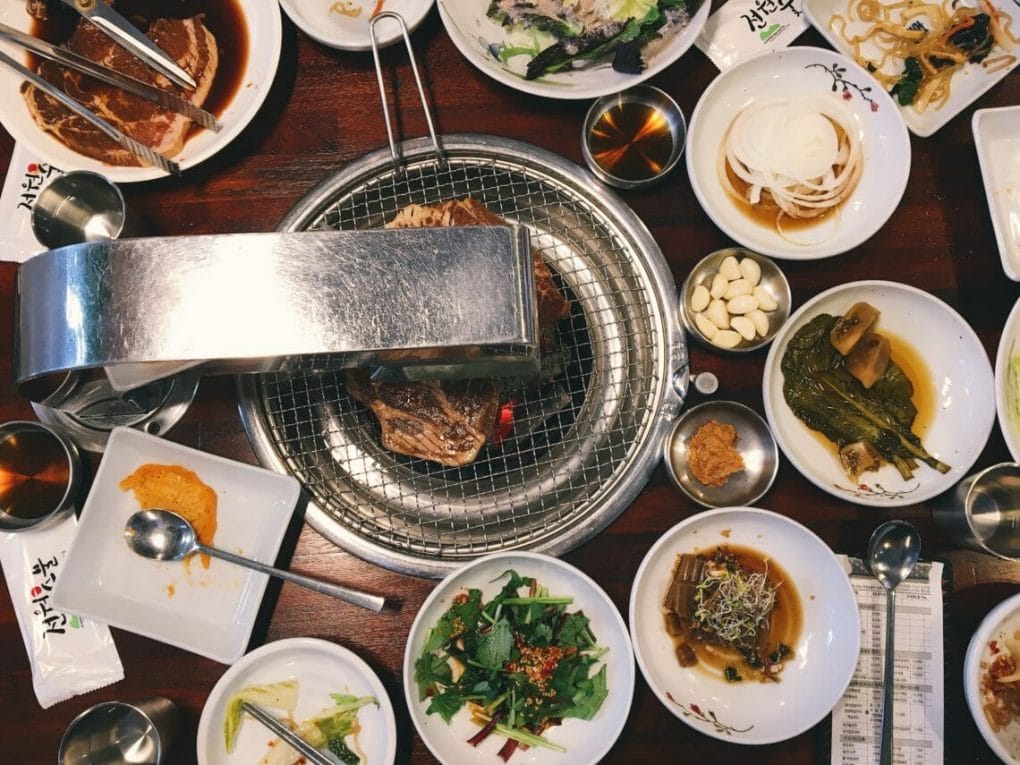
Stop 5: Spend the evening at a Noraebang (Karaoke)
Noraebangs are a Korean staple and are a popular way to let off steam for locals young and old. These karaoke rooms often run late into the night and offer bottle service and sometimes Korean bar snacks. Rooms are rented out by the hour and you can bring as many people as can fit! Singing at a Noraebang is definitely one of the best things to do in Seoul at night.
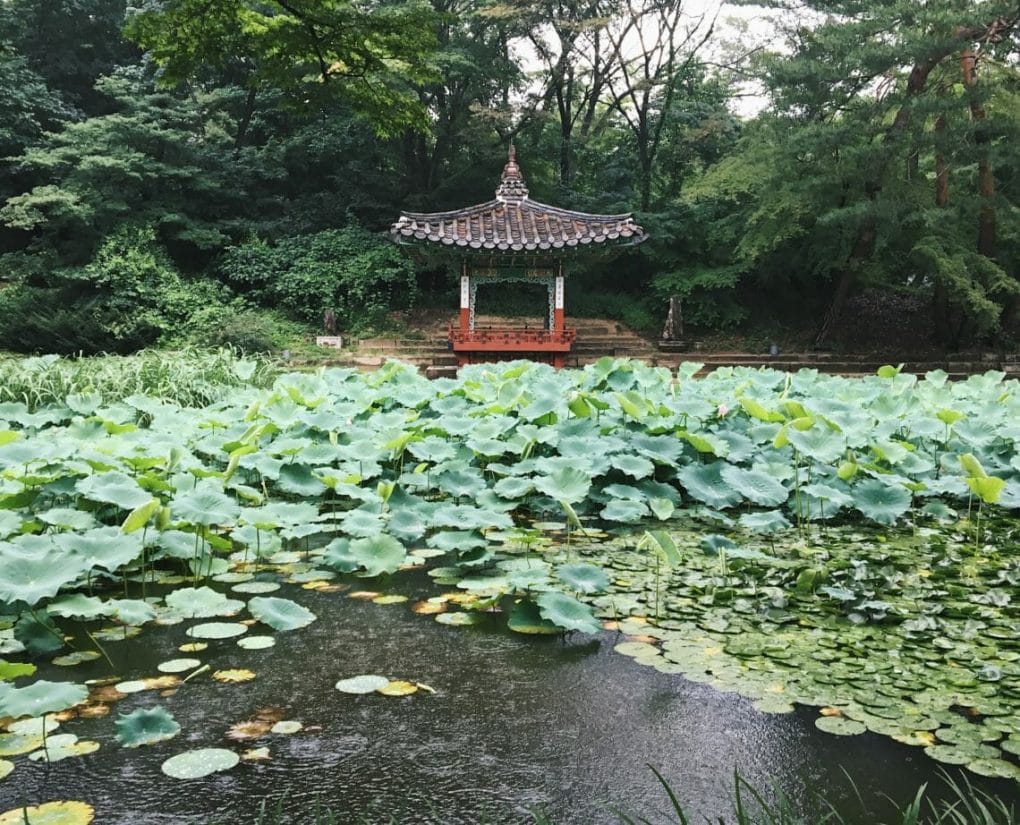
Day 3: Nature, City Views + Itaewon
For your last day in Seoul, I recommend taking a hike to visit one of the best viewpoints overlooking the city. Hiking is Korea’s national pastime afterall, and trekking amongst the Koreans is often a good time! Then come back to the city to chill in Itaewon, the international district of Seoul.
Stop 1: Hike Inwangsan’s Ancient City Walls – OR – Bukhansan National Park – OR – Namhansanseong Fortress
Inwangsan is a nice chill hike along the ancient city walls that encircle the outer limits of Seoul. Wake up early to enjoy some of the best views of the city and get a nice morning workout. The entire hike should take about 2-3 hours to complete depending on rest time and there are a few stair climbs so be prepared! I wore a big sweater and jeans on this hike so it isn’t overly difficult. Try to plan your visit during a clear day (low pollution) so you have the best visibility of the city.
Bukhansan National Park is known as one of the best hiking trails in the country and is not such a chill hike. About an hour metro ride from the city, this mountain is definitely best for avid hikers and outdoorsy folk. The summit is famous for its large flat rock surface with wonderful views over Seoul. Many come to have a picnic and a rest at the top before making the trek back down.
Namhansanseong Fortress is a historic mountain top fortress that dates as far back as the 7th century, although due to war and destruction most of the fortress is from the 17th century and modern times. to It sits at an elevation of 1574 and offers a cool experience of wandering around Seoul’s ancient city walls where you can see the skyline on the horizon. This UNESCO World Heritage site can be reached via metro

Stop 2: War Memorial of Korea
The War Memorial of Korea is one of Seoul’s most important attractions, and is a museum dedicated to sharing the history of the Korean War. The museum sits where the former military headquarters were once located and has wartime items and information on display.
Stop 3: Itaewon District
Itaewon is the international district that is quiet in the morning and comes to life in the evening. After your morning hike, come to Itaewon to wander and explore this unique area of Seoul. The Leeum Museum of Art is in the area and has two exhibits showcasing the modern and the traditional side of Korean art.
If art isn’t your scene the Korean War museum is also nearby. Learning about the history of the Korean war was a really eye-opening experience!
For dinner, hop into any of the many highly rated restaurants and take your pick from Korean to any international cuisine. Itaewon is also the best place to grab an after-dinner cocktail and to party and dance the night away. But before you get too party crazy…
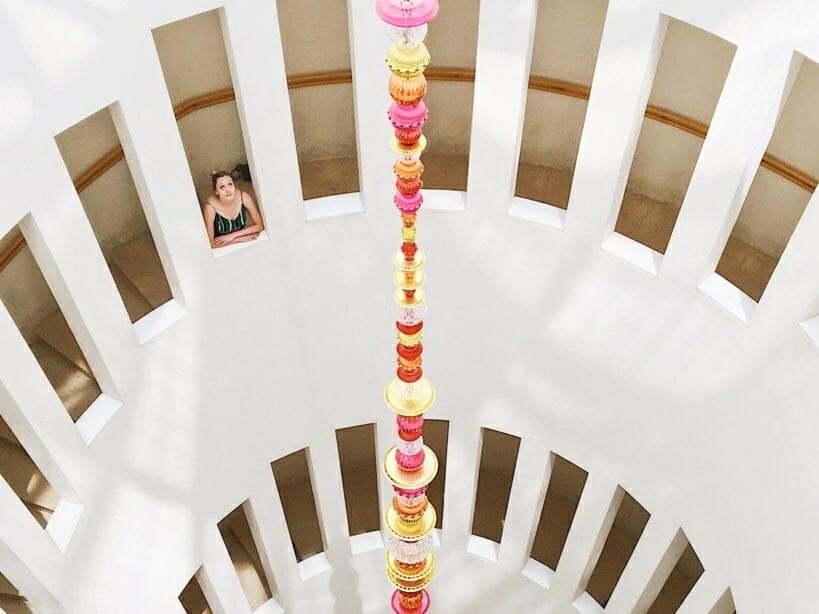
Stop 4: N Seoul Tower
Be sure to catch the sunset from N Seoul Tower in Itaewon. It’s located at the top of Namsan Mountain and you can take a cable car or hike the 45 minutes up the never-ending stairs. The cable car is a pretty cool experience, but there is almost always a very long line! I personally recommend skipping the cable car unless you’re ok with waiting or you get lucky and have few crowds. At the top, you get a 360-degree view of the city.
Try to come in the evening and stay to see the sunrise. That way you get both views – the day and night. This tends to be the busiest time to visit, but in my opinion, it’s worth it. Entrance to the tower is 10,000 won / $10 USD and they are open 10am – 11pm.

Other Things to Add to Your Seoul Itinerary
As I mentioned above, there are a million ways to experience Seoul, and what your itinerary looks like will vary based on your interested and travel style. So if any of the above recommendations don’t jive with you, here are other itinerary options for some of the best things to do in Seoul!
Take a Half or Full Day Trip to the DMZ
The DMZ, or Demilitarized Zone, is where the Korean War continues to stand at a halt today. It’s on the far northern border of South Korea and allows visitors an opportunity to not only learn more about the war, but get a glimpse into North Korea. During your visit, you can visit underground tunnels, an observatory overlooking North Korea, and even a secured gate where North Korean guards stand day in and day out.
Visitors can take a DMZ day trip tour from Seoul. The places you can visit at the DMZ are subject to availability and some areas may be closed due to government/security reasons.
↠ Read More: 20 Best Day Trips from Seoul, South Korea
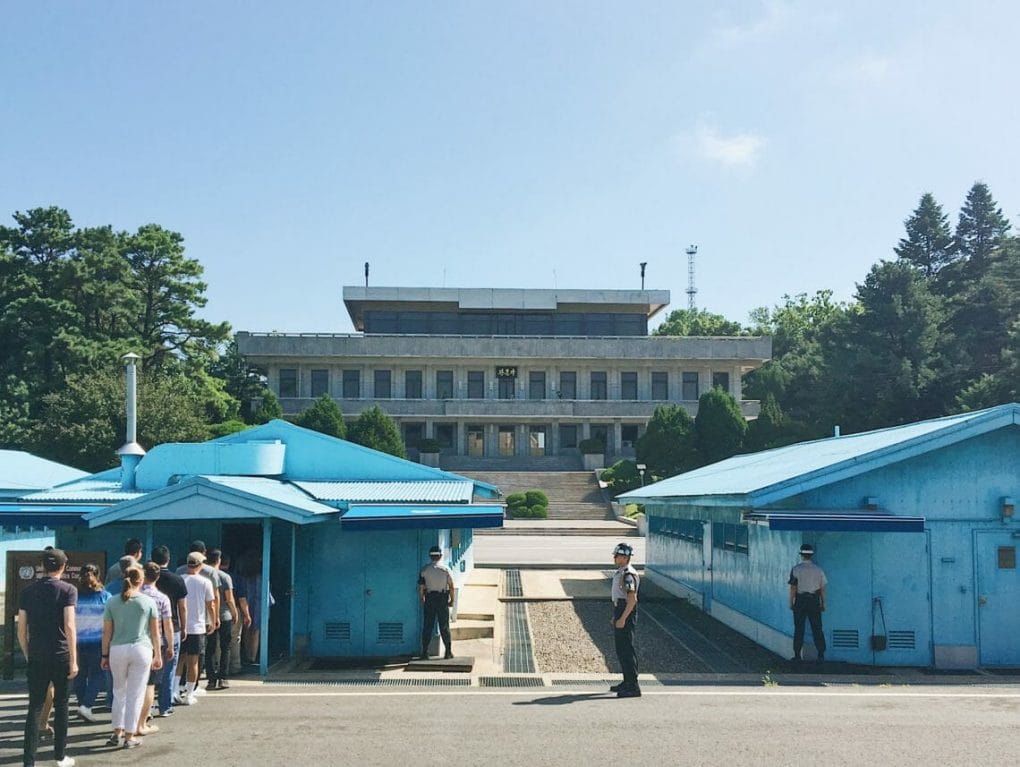
Take a Day Trip to Seoraksan National Park
Nature and hiking lovers should consider a day trip to Seoraksan National Park! As one of the country’s most beautiful mountain areas, the area is truly gorgeous. The park has bright blue waters and waterfalls, a mountainside cave where a monk practices, mountain ridge views, and exciting hikes. Visiting the fall is especially beautiful as the leaves change to vibrant colors. Seoraksan is about two hours from Seoul.
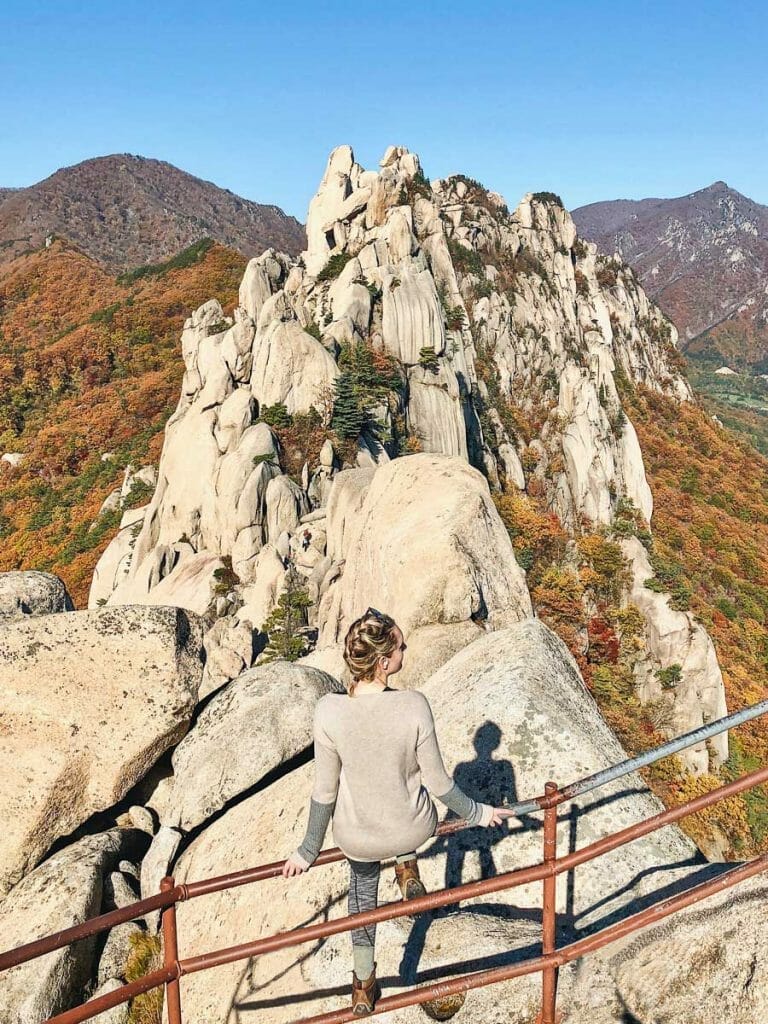
More Best Things to Do in Seoul
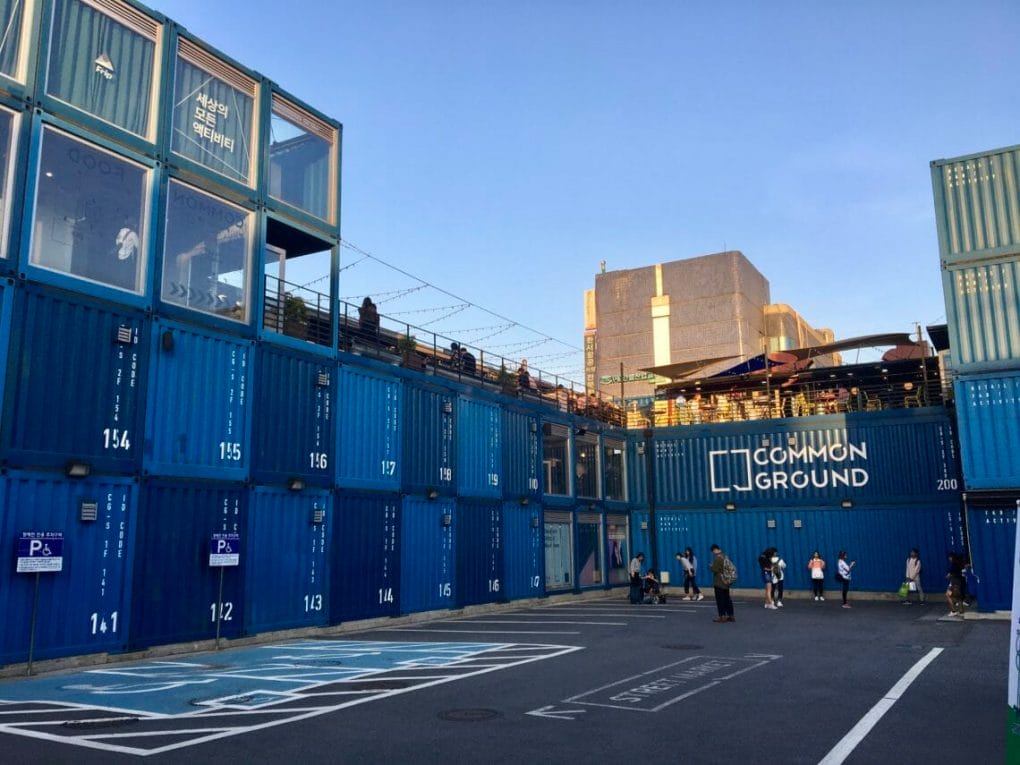


Seoul is also on my list! Sounds like a fun filled three days you had! I’m surprised as some of what you’ve quoted isn’t as expensive as I’d imagined. I’ve heard South Korea has been really expensive? How much were you budgeting per day?
Hey Alex! You’re right, Seoul is really expensive. The interesting thing about Korea is that the tourist attractions and culture gems run by the government tend to have pretty affordable fees. The meals, drinks and accommodation will be expensive though. Plan to spend about $20 USD per meal, $10-15 for a cocktail and $25-30 per night for a hostel! It’s hard for me to give a budget per se coming from Daegu, but we probably spent give or take $100/day for good food and drink, accommodation and activities. You can do it cheaper for sure, but if you want to enjoy the best of Seoul that’s what I’d guesstimate ☺️